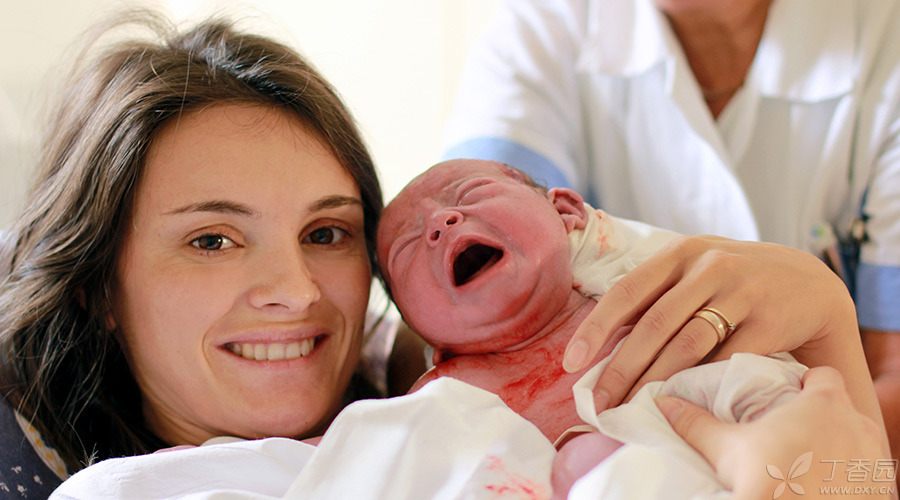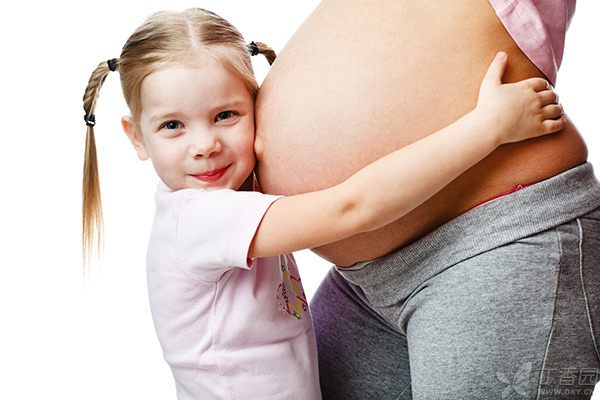
Natural delivery or caesarean section?
For an obstetrician, this question will run through his career. It is unrealistic to answer [which is better] in a few words.
When the conditions are suitable, it is to encourage parturients to give birth smoothly. However, there are four major influencing factors that decide to give birth smoothly: labor force, birth canal, fetus and mental state. If doctors judge that it may be difficult to give birth smoothly, cesarean section should be carried out in time to terminate pregnancy.
Four Influencing Factors
1. Productivity
Productivity is the force that forces the fetus and placenta out of the womb.
The main sources of this force are uterine contraction, abdominal muscles and pelvic floor muscles, and the most important is the force of uterine contraction.
The reason why giving birth to a child is painful is also because of severe uterine contraction. Most people have no problem with the strength of abdominal muscles. As long as you have constipation, the strength to relieve stool is enough. The most important strength is actually uterine contraction.
If uterine contraction is not ideal, you can give uterine contraction drugs or use artificial membrane breaking methods to strengthen uterine contraction. However, if uterine contraction is weak, the treatment effect is not ideal, no matter how many abdominal muscles you have, it is also impossible to give birth, and then you need a doctor to judge whether vaginal midwifery or cesarean section.
2. Birth canal
The birth canal is the channel through which the fetus passes when it is delivered. Doctors pay more attention to pelvic conditions when evaluating.
Some petite women are very worried about whether their pelvis is too small to come out. It should be said that unless there are pelvic deformities or pelvic pathological changes (such as fractures, tuberculosis, etc.), most women’s pelvis is suitable for vaginal delivery. There are differences between male and female pelvis, and female pelvis is naturally ready for delivery.
In general, It is still relatively rare that the pelvis is too narrow to cause the fetal head to fail to descend (called absolute cephalopelvic disproportion). But more is the relative head basin does not weigh. Because the head is not an absolute ball shape, But an irregular ellipsoid, Having a longer diameter line and a shorter diameter line, We hope that when we pass through the pelvis, The fetal head passes through various positions of the pelvis with the shortest diameter line. That is to say, the fetal head will change in the birth canal (called internal rotation). If the fetal head cannot rotate smoothly, It is possible to get stuck in the narrower position of the birth canal by a relatively long diameter line. There is a relative head-basin disproportion. This kind of situation can try to turn the fetal position with bare hands or use the role of pelvic floor muscles by strengthening uterine contraction. Continue to observe for a period of time, and some of them can become full members. If the effect is not ideal, then it is possible to need the help of a doctor-vaginal midwifery or cesarean section.
3. Fetus
As mention earlier, The pelvis and the fetal head are relative in size, If the pelvis is large and the fetal head is larger, It still does not weigh the head and basin, The pelvis is small, The head of the fetus is also small, It can still be delivered smoothly. And the fetus can rotate internally during delivery. In order to adapt to the various radial lines of the birth canal. Apart from the cephalopelvic problem, There is also the problem of fetal position. The fetus usually comes out head down. Called the head position, If the buttocks are called breech presentation below, The risk of vaginal delivery is relatively high in this case, Because the ass is usually smaller than the head, Maybe the ass will come out, but the head will not come out, In most cases, Breech presentation is cesarean section. There are also relatively rare fetal positions. Like feet under, shoulders under, Or just lying in the womb, All these cases require cesarean section. In addition, Another is that the fetus is squeezed by the birth canal during delivery, and there may be signs of hypoxia, which is called fetal distress. If the fetal distress is judged, the obstetrician should further judge whether it is possible to give birth through vagina in a short period of time. If not, cesarean section should be performed immediately.
4. Mental status
As for the fourth factor, Mental factors of parturients. According to the textbook, Mental factors can affect productivity, However, it is not clear how the specific impact is made, but it is true that sometimes, prenatal assessments are ideal for parturients, because of personal wishes, in the end it is impossible to give birth, uterine contraction is weak, people are very tired, and finally cesarean section. Moreover, the parturient has to experience pain and fear, and the psychological support of family members is still more important.
In fact, these factors are not absolutely isolated, but affect each other. If something goes wrong with one factor, it may affect other factors as well. The problem of one factor has been solved, and the problem of other factors may also be solved accordingly.
The things about cesarean section
When people accept a new thing, It is difficult to fully grasp the meaning of the introduction, Different people may have different choices in obtaining information. If you want to introduce an operation to non-medical professionals, It is not clear in a word or two. If a pregnant woman who is determined to have a cesarean section is reading this article, She may focus on remembering the important role of cesarean section in saving the lives of mother and child, Will remember that if you don’t have cesarean section, you may bring all kinds of risks to your mother and child, In the end, she firmly believed that she would have a cesarean section. If a pregnant woman who is determined not to have a cesarean section reads this article, She may focus on remembering the risks of cesarean section to mothers, For the next pregnancy and the impact on the fetus, Eventually firmed her belief that she would not have surgery. So it is, This article is really counterproductive. It is really very difficult to introduce an operation to a non-medical professional. Therefore, before planning to understand cesarean section, don’t have a preconceived misconception. If you are already firm, look at the other side of the matter.
Cesarean section is a relatively mature surgical method, for saving the life of pregnant and lying-in women and improving dystocia outcomes are very helpful methods. Therefore, the first thing to emphasize is that although it is an operation, there is no need to worry too much. Don’t think doing a cesarean section is a big event that the sky is falling.
However, what is more problematic now is that, Most people don’t think cesarean section is a big thing, but think it is just a small operation, even a stomachache for the operation, so it is necessary to let everyone know about cesarean section. As long as it comes to surgery in medicine, there must be indications, contraindications, complications, and its risks and injuries.
Indications for cesarean section include absolute indications and relative indications.
There are not many absolute indications, that is to say, it is definitely impossible to give birth or kill people without cesarean section, such as cephalopelvic disproportion, transverse position, birth canal obstruction, central placenta previa, placental abruption, etc.
However, strictly speaking, there is no absolute contraindication for cesarean section in what, because cesarean section does not solve one person’s problem, so even if the parturient is complicated with serious complications, the operation may bring the threat of death, but the operation is not contraindication because it can quickly terminate pregnancy and bring hope to the newborn. Moreover, for this kind of parturient, even if no operation is performed, the delivery itself will bring the threat of death. Rapid termination of pregnancy may gain rescue time, so there is no absolute taboo.
The key to cesarean section, Is how to grasp the indications. More is the relative indications, that is to say, do cesarean section may benefit more than vaginal delivery, for example, the breech presentation mentioned earlier is the relative indications. It is not to say that breech presentation cannot vaginal delivery, but the risk of vaginal delivery is greater than cesarean section, so the risk is relatively smaller.

What are the risks of cesarean section?
This is the complication of cesarean section.
The surgical risks of cesarean section are not only bleeding, infection and injury common to all kinds of operations, There are also obstetric complications. Maternal delivery is an adventurous process. Even if the vagina gives birth smoothly, Also will appear obstetric complications, such as postpartum hemorrhage, puerperal infection, amniotic fluid embolism and so on, can be described as knife hit blood, all fatal. And cesarean section surgery occurrence of these obstetric complications are higher than vaginal delivery, such as amniotic fluid embolism such dangerous complications, cesarean section risk is 12.5 times of vaginal delivery.
Moreover, pregnancy again after cesarean section, Placenta previa, placenta accreta risk will increase, Cesarean scar pregnancy may occur, Although the incidence rate is very low, It is a very dangerous ectopic pregnancy. The uterus that has undergone cesarean section will have a suture scar. We call it scar uterus, For the scar uterus to give birth again, Cesarean section is not the only way. With the increase of cesarean section, Scar uterus is getting pregnant again and giving birth more and more. In fact, The uterine rupture rate of vaginal delivery after cesarean section scar uterus pregnancy is not particularly high, which is related to the scar location, suture method and recovery of the previous cesarean section. If the obstetric factors of the previous cesarean section are excluded, vaginal delivery can also be tried, which is not new in foreign countries.
How to choose? Grasping indications is the key.
In short, childbirth is a very complicated process. There are many influencing factors, Changes are rapid and involve both mother and child lives. Doctors need to constantly evaluate the pros and cons of various risks in the process and choose the ones that are less risky to do. Sometimes this kind of risk assessment is very difficult, because it is not weighing on the balance with weights, but equivalent to predicting the future and weighing the unknown.
At this point, you should be able to understand that we cannot simply choose which of the two delivery methods is better. Since there is a good one, why do you have another method? There is no exclusivity between these two methods, Each has its own scope of adaptation, What you should do is to choose the right way according to the right situation. So it is very important: Many problems are either black or white, You can’t try to make simple and crude choices about all kinds of things. When making such choices, A layman cannot make good judgments, You should turn to a professional. Medicine is a highly specialized subject, and the situation is complicated and changeable. Don’t try to judge by the few words found on the Internet. Another important point is that on professional issues, you should respect the advice of professionals and don’t take it for granted based on your little experience.
Responsible Editor: Xiaoyan
This article is exclusively authorized by the author to be used by Clove Garden and refuses any other form of reprinting.
Photo from: shutterstock.com
